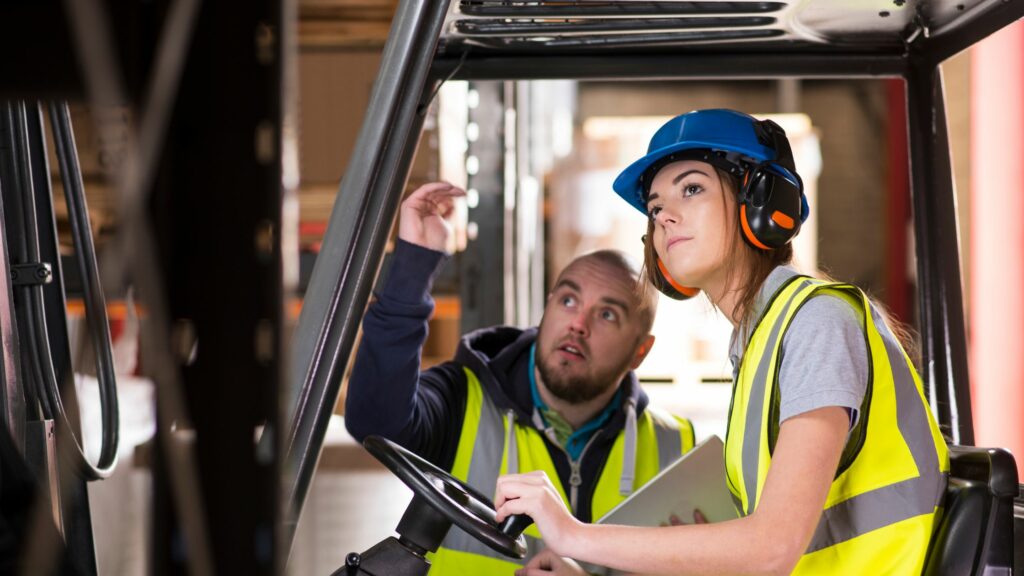
Operating a forklift may seem straightforward, but it’s a skilled job that requires proper training and certification to ensure safety and efficiency in the workplace.
Forklifts are indispensable in various industries, including warehouses, manufacturing, construction, and logistics.
To become a certified forklift driver, you must undergo formal training, gain hands-on experience, and pass a certification exam.
In this article, we will outline the steps to becoming a certified forklift driver and highlight the importance of this certification.
Why Certification Matters
Certification as a forklift driver is essential for several reasons. First and foremost, it ensures safety in the workplace.
Forklift accidents can result in serious injuries or even fatalities, so it’s crucial to have skilled and certified operators who understand the equipment’s capabilities and limitations.
Secondly, certification enhances job opportunities and employability. Many employers require forklift operators to be certified before hiring them.
Having this certification on your resume can give you a competitive edge in the job market and increase your chances of landing a well-paying position.
When looking to gain practical experience operating a forklift, consider reaching out to local companies offering reliable forklift rental services, as they may provide opportunities for hands-on training.
Lastly, certification often leads to higher earning potential. Certified forklift operators typically earn more than their non-certified counterparts because they have proven their competence and commitment to safety.
Now, let’s dive into the steps to becoming a certified forklift driver.
Step 1: Meet Eligibility Requirements
Before you can start your journey to become a certified forklift driver, you need to ensure you meet certain eligibility requirements.
These requirements may vary slightly depending on your location and the certifying authority, but they typically include:
- Age: You must be at least 18 years old to operate a forklift in most jurisdictions.
- Health and Physical Fitness: You should be in good health and physical condition to safely operate a forklift. Some certifications may require a medical examination or a fitness assessment.
- Basic Education: A high school diploma or equivalent is often required.
- Legal Eligibility: You should have a clean criminal record, as certain convictions may disqualify you from becoming a certified forklift driver.
In the demanding field of forklift operation, maintaining proper posture and ergonomic techniques is essential to prevent workplace injuries, including those related to thoracic spine pain.
Step 2: Enroll in a Forklift Training Program
Once you’ve confirmed your eligibility, the next step is to enroll in a forklift training program.
These programs are typically offered by vocational schools, community colleges, forklift manufacturers, or specialized training centers.
The training program should cover both theoretical and practical aspects of forklift operation. During the training, you’ll learn about:
- Forklift components and their functions
- Safety procedures and regulations
- Load-handling techniques
- Maneuvering in confined spaces
- Preventative maintenance
Step 3: Gain Hands-On Experience
While classroom training is essential, hands-on experience is equally crucial.
Most training programs include practical training sessions where you’ll have the opportunity to operate a forklift under the guidance of an experienced instructor.
This hands-on experience is invaluable for honing your skills and developing the necessary muscle memory to operate the forklift safely and efficiently.
Step 4: Pass the Certification Exam
After completing your training program and gaining sufficient hands-on experience, you’ll need to pass a certification exam.
Usually, the exam has both a written section and a practical skills examination. Your understanding of forklift operation concepts, safety precautions, and regulations is evaluated in the written section.
The practical skills test evaluates your ability to operate the forklift safely and effectively in a controlled environment.
Step 5: Receive Your Certification
Upon successfully passing the certification exam, you will receive your forklift operator certification.
This certification is proof that you have the knowledge and skills required to operate a forklift safely and efficiently.
It is usually valid for a specific period, after which you may need to undergo recertification or renewal, depending on local regulations.
Step 6: Seek Employment
With your certification in hand, you are now ready to seek employment as a certified forklift driver.
Many industries require forklift operators, so you can explore job opportunities in warehouses, manufacturing facilities, construction sites, and distribution centers.
Be sure to highlight your certification and training on your resume to stand out to potential employers.
Becoming a certified forklift driver is a rewarding endeavor that not only enhances your safety knowledge but also opens up job opportunities and increases your earning potential.
By following these steps and prioritizing safety in your forklift operations, you can build a successful career as a certified forklift driver and contribute to a safer and more efficient workplace.


